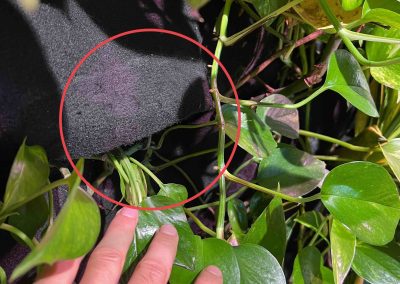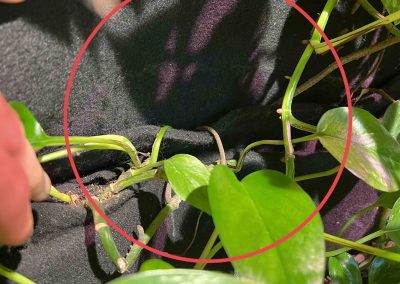Possible problems
How to adjust the watering schedule?
The watering schedule varies depending on the installation location. To adapt to different conditions and plant types, testing and careful observation are required throughout the use of the wall.
Watering schedules can range from several minutes to several minutes per day, once a day or less often. For more information, we recommend visiting the vertical garden irrigation page.
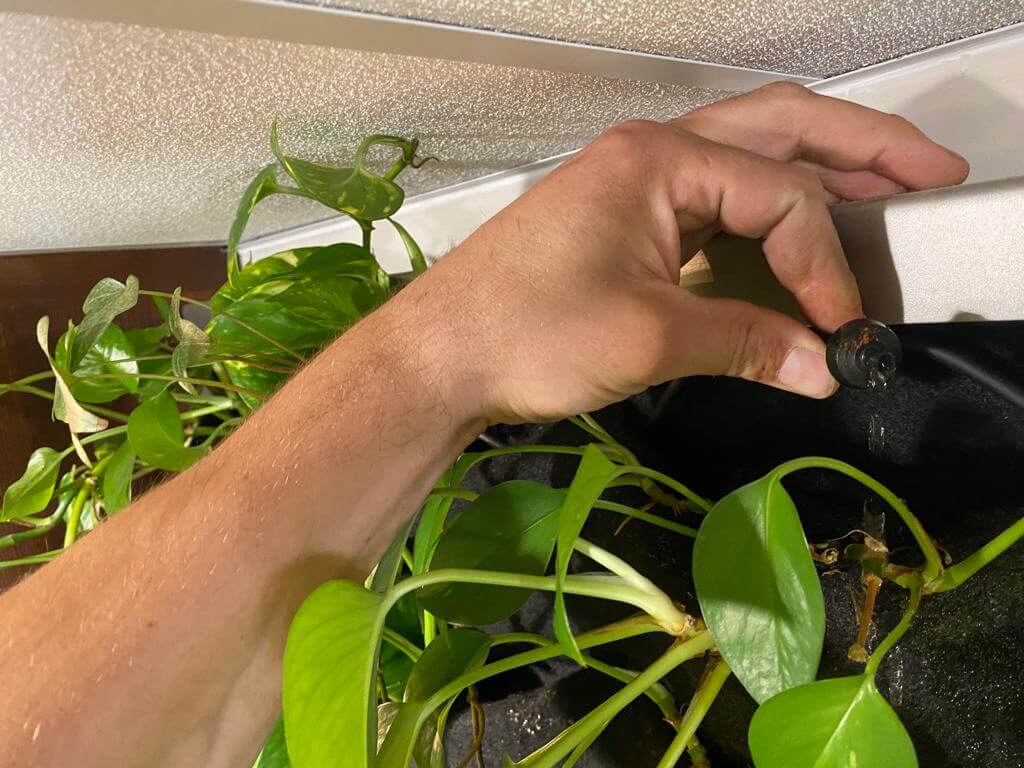
Why do some plants dry out while others receive water?
Usually, an irrigation line is made in the upper row of pockets. Note that every lower fold of the pocket becomes moist during watering. This is why it’s required for each plant placed in a pocket to touch the bottom of the pocket itself.
Also, if you use a lot of peat for your plantings, the soil, when it dries, may become hydrophobic, meaning it will repel water.
To prevent plants from drying out:
- Check if each plant is tightly placed in the pockets.
- Ensure that the wrapped plant touches the lower fold of each pocket.
- If the soil around a plant dries out to the point where it won’t absorb water, take it out and soak it in water until the soil breaks down enough to absorb moisture.
- Run watering cycles more frequently and for shorter durations to ensure proper moisture flow throughout the system.
- Sometimes, simply replacing a dry plant with a nearby wet one may help ensure adequate hydration.
- It’s recommended to use composted soil, which absorbs water better.
- Over time, increase the watering duration. Plants will consume more water as they grow.
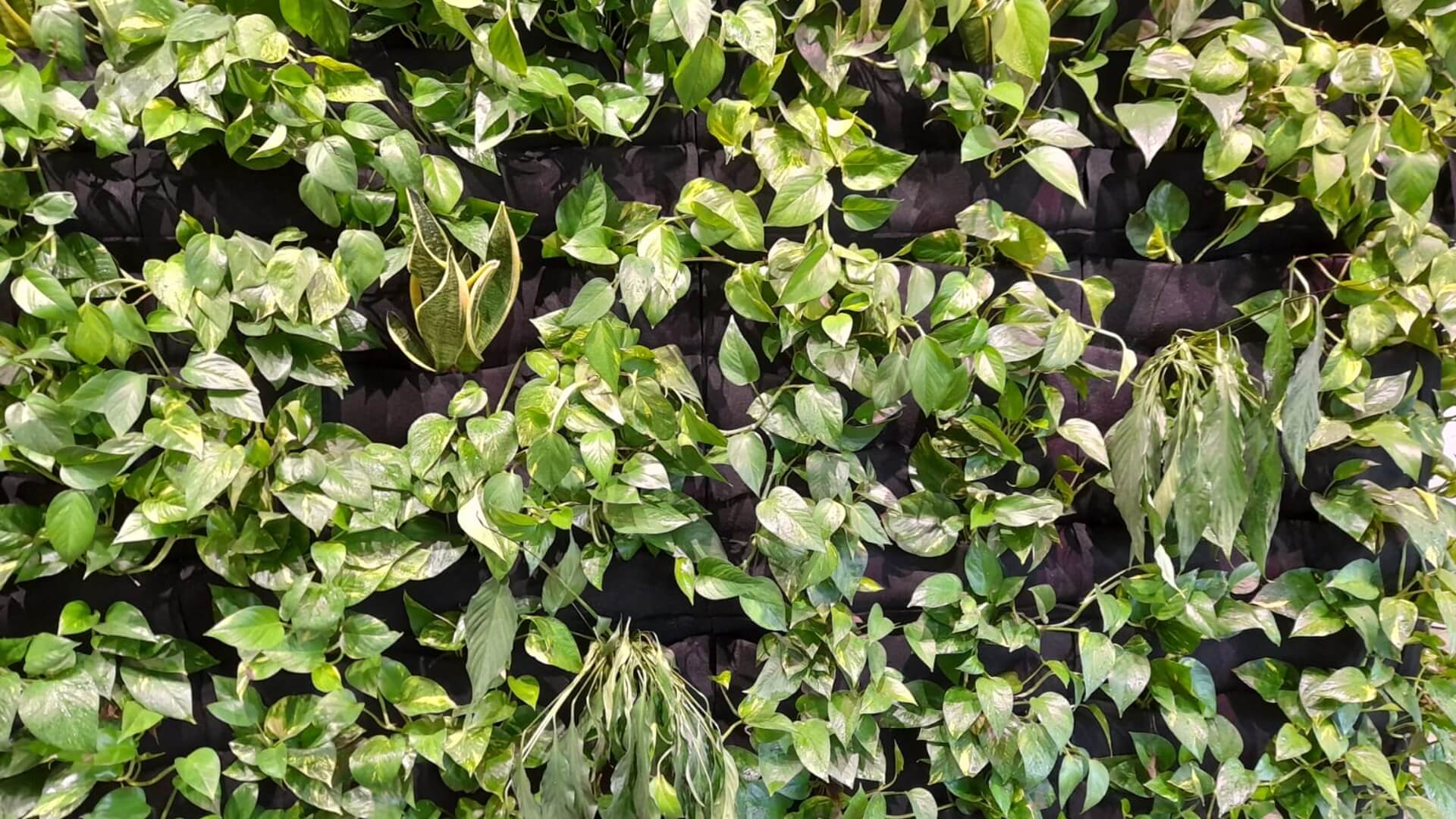
What if water is dripping from the front of the garden?
The construction of the material almost always directs water back into the system. However, if a piece of felt between the panels shifts, water can find an escape route.
Felt wicks water, ensuring that moisture is always in the lowest point, which means that any protruding element can cause a leak.
To fix this issue, simply activate the irrigation system and observe where the dripping occurs. Locate the source and tuck in any protruding pieces of felt. These are usually the corners of the panel or the lower part. Make sure that the lower flap of the upper panel is tucked away and under the upper flap of the panel below.
Sometimes, it might happen that a leaf grows in such a way that it directs water outside, or a root grows outwards. In such cases, removing any suspicious leaves or roots should suffice.
A short video on how to lay the felt.
Why do white deposits sometimes appear on the surface?
White deposits are caused by lime or other minerals in the water. They can also be caused by very high pH. In such conditions, plants will not be able to take up nutrients. To solve this problem, you should consider using a reverse osmosis-based carbon filter to purify your water source. To remove existing deposits, use distilled white vinegar in a spray bottle to dissolve the white deposits. The acidic vinegar will also lower the pH in your system.
Sometimes, deposits are mistaken for mold appearing on the pockets.
If mold appears, consider using a fan to aid airflow in the room.
To prevent mold growth on the felt, use a very light bleach solution in a spray bottle. Add about 1 tablespoon of bleach to a liter of water. Then, spray the affected areas. The bleach will dissipate quickly and won’t harm the plants. The bleach won’t affect the color of the felt.
Bleaching wraps is also a good way to clean them. This method can also be used to clean a used panel.
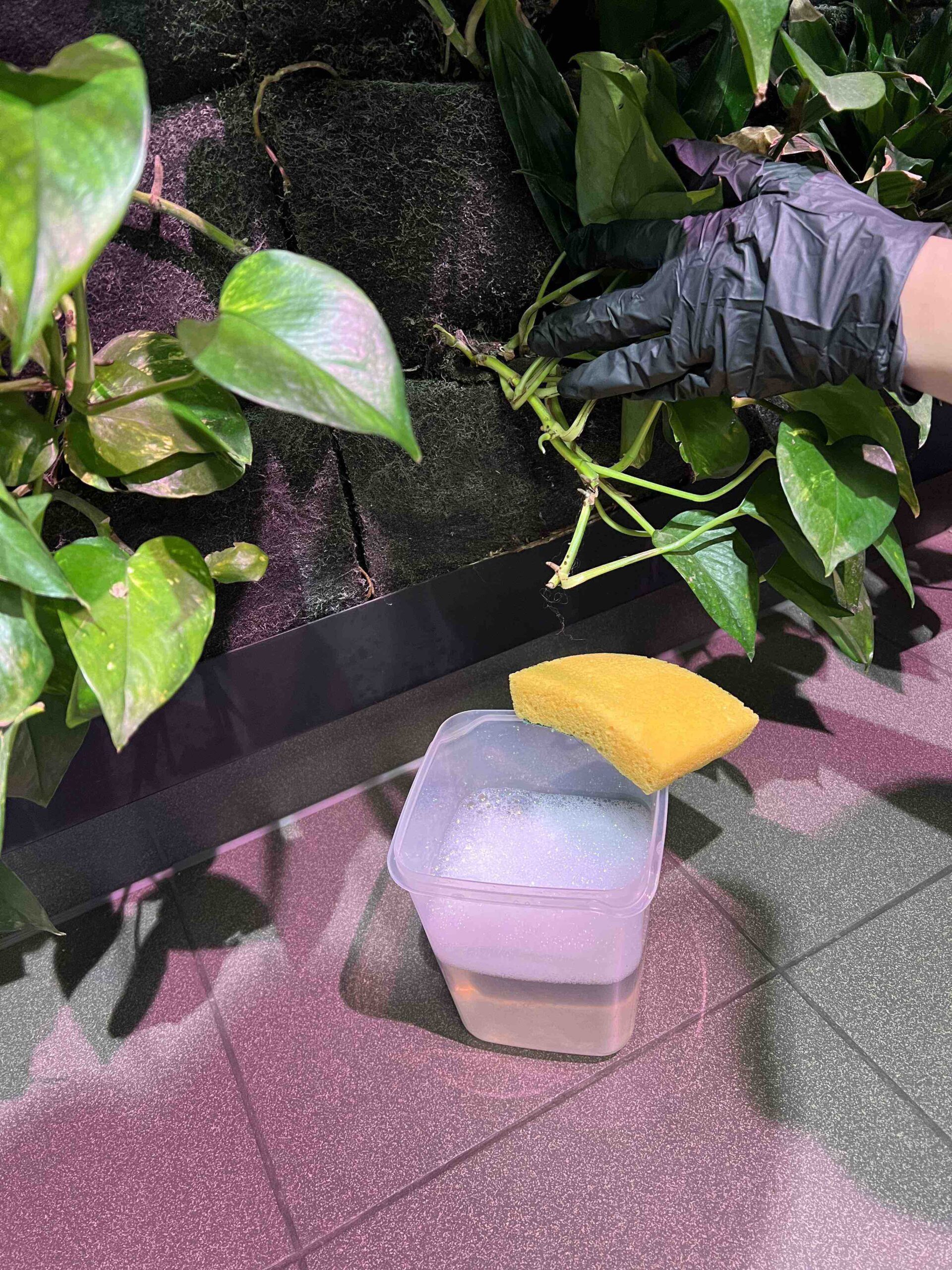
What if water is overflowing from the garden’s collecting gutter?
The collecting gutter is used to collect excess water from watering the vertical garden. The gutter is typically connected to a sewage pipe with a diameter of either 32 mm or 50 mm. If water starts overflowing from the gutter, it’s most likely due to a clogged drain.
Depending on the construction of the gutter or the type of gutter used, the drain may become blocked by plant residues, other contaminants, or by plant roots, which can grow into the sewage drain as the plants expand.
Garden with a reservoir – why is the garden not being watered?
The most common reasons why a vertical garden with a closed water circuit is not being watered are:
- Pump damage (the pump may get damaged due to periodic water shortage in the tank or dirty water) – unplug the pump from the controller and connect it directly to a socket to check if it’s working correctly.
- Lack of water in the tank – check the water level in the tank. The pump should always be submerged, and the tank should be refilled to the top at least once a week. The absence of water in the tank can lead to pump damage.
- Dirty water tank – check the cleanliness of the water tank and the proper functioning of the pump. Contaminants in the tank can cause pump damage.
- Misconfigured controller – make sure the controller is correctly set.
- Clogged drippers – manually activate the vertical garden watering system and check the proper operation of the drippers one by one.
Garden with an open water circuit – why isn’t it being watered?
The reasons why a vertical garden might not be watering properly can include:
- Lack of water in the water supply – check the main water valve.
- Lack of water in the vertical garden’s irrigation system – check the water valve near the controller.
- The irrigation controller is turned off – make sure the controller is set to AUTO mode.
- No electrical power to the controller – check if the plug is correctly inserted into the socket. The presence of power in the socket can be indicated by the display showing “NO/AC” for the ORBIT controller.
- Clogged emitters – manually activate the vertical garden’s irrigation system and check the proper functioning of each emitter.
Share your vertical garden issues and solutions with us. We love to share our knowledge about vertical gardens.
Get in touch with us – we’re happy to help you solve your problem. Remember that photos from your phone can also be very helpful as they allow us to better understand your situation.

